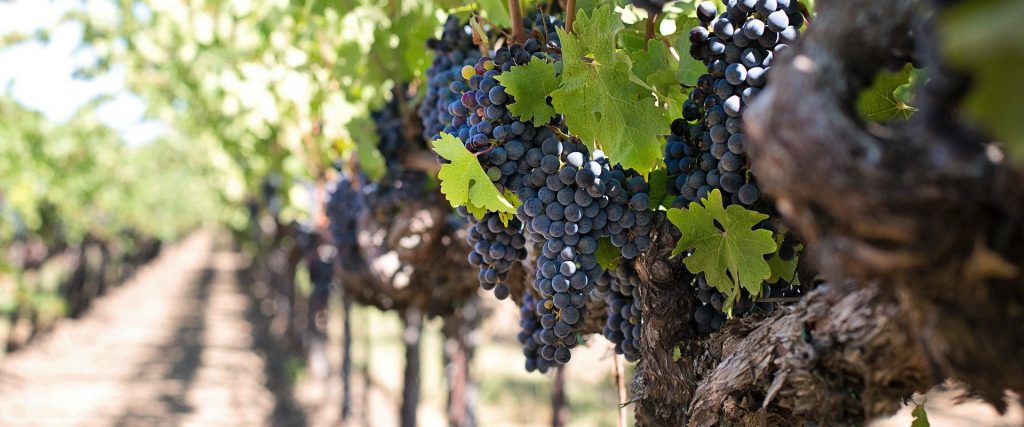Do you know why old vine wines are so important? When it comes to wine, we all know that dates matter. The vintage, the years it spent in the bottle, the months in the cask… but none can provide an absolute guarantees as to what comes out in the glass. However, not everyone knows that the same is true of the vines themselves.
The age of the vines that produce the grapes from which the wine is made has a lot to do with its eventual flavour and character. The vineyard needs time to settle in and adapt to the conditions of the terroir so that the grapes can ripen in a consistent and balanced manner.
The challenge is to ensure that the vines grow up healthy and that’s no easy task. The genetic stock and way they are cared for are key to the end results. When cultivated well, every year the fruit will improve and the plants will become treasures, the apples of their growers’ eye.
In Argentina producers are proud to be able to use terms such as old vines, old vineyards, viñas viejas or vieilles vignes on their labels. It is generally agreed that they can be applied to vineyards that are at least half a century old although there are no legal standards in the area. Interestingly, the hard data tells us that in Argentina about a third of vineyards are at least 40 years old and there are several that are over a hundred and thus contain valuable genetic material (Observatorio Vitivinícola Argentino).
‘Old vines in Argentina have unique potential. They contain genetic material that has been lost in many parts of the world. We need to protect and nourish that kind of biodiversity,’ says Hans Vinding Diers, who produces Noemia Malbec, one of the best reds in the country, in Río Negro. It is made from vines planted in 1932 that might well have been related to the first Malbec plants that came to Argentina 150 years ago.
Better in the old days?
Apart from their historic value and heritage, Vinding Diers is convinced that the real value of old vines lies elsewhere: ‘They’re noble plants that have adapted naturally to their environment to create vineyards with specific, unique value.’
The vast majority of winegrowers agree with the Patagonian producer as regards the value of old vines and their potential to produce great wines. They all say that aged vines achieve a level of complexity at good levels of concentration without the risk of over-ripening and with gentler tannins than younger wines. These wines tend to be balanced with their own identity and character; those of the vineyard from which they came.
Preserving historic vineyards
The downside of old vineyards is their productivity. The older the plants get, the lower the yields tend to be at harvest time, tempting producers to replace them so as to improve their margins. Further pressure comes from rising real estate values in areas where old vineyards stand: another risk to Argentina’s genetic viticultural heritage.
‘Giving these vines a commercial value will help to ensure their continued existence. Some of the oldest vines that belong to the Catena family are in areas where land values are rising all the time but we are committed to conserving their biodiversity,’ says Alejandro Vigil. He offers the example of producing high end wines made from grapes from their Angélica vineyard, which is over 100 years old, as well as a plantation programme to spread this genetic material across Mendoza. He hopes that that way he will be able to ‘reproduce a germplasm that dates back to 1860 and thus ensure the sustainability of the original Malbec.’
Age-old flavours in the glass
The vision displayed by Vinding-Diers and Vigil is shared by other oenologists. An interesting case study is that begun in 2012 by Alejandro Pepa, the oenologist at El Esteco. ‘Working with old vines is a way of honouring the achievements of our predecessors but these are also vines that deliver enormous quality and identity, allowing us to produce wines that connect us to our history.’ This philosophy resulted, three years later, in El Esteco Old Vines, a collection of Torrontés, Malbec, Cabernet Sauvignon and Criolla made with grapes from Cafayate, Salta, from vines planted between 1945 and 1958.
‘We make the effort to maintain them in spite of their low yields. The quality and consistency make that work worthwhile beyond the inherent inefficiencies and we hope that more producers will work similarly. They should be thinking about high end wines so as to ensure the sustainability of the vineyards.’
Another winery in the Calchaquí Valley, Colomé, boasts a vineyard that was originally planted in 1831 which they use to make one of their most exclusive wines, Colomé 1831 Malbec, as well as a Cabernet Sauvignon that will soon be released onto the market.
Other labels with the weight of history behind them include the Chacra Pinot Noir made by Piero Incisa Della Rochetta in Río Negro from vineyards planted between 1932 and 1955, as well as their neighbours Humberto Canale whose Humberto Canale Old Vineyards line includes Malbec, Pinot Noir, Riesling and Semillón. In the latter case, the vines involved were planted between 1937 and 1969.
More recently, the Old Vines of Patagonia selection made by Matías Riccitelli followed the discovery of a semi-abandoned vineyard dating back to the middle of the 20th century with Bastardo, Merlot and Torrontés vines that offer very distinctive flavours from the south.
In Mendoza, as was only to be expected, there are many wines made from old vines, with the greatest concentration found in Luján de Cuyo. There, for example, Roberto de la Mota uses grapes from a vineyard planted in 1928 to make a Malbec that is essential to an understanding of the identity of reds from the region, while Lagarde uses grapes from a hundred year old vineyard to make the Malbecs and Cabernet Sauvignons that fall under the Primeras Viñas label.
However, it is perhaps Vistalba that is most representative of the history of old vineyards in Luján de Cuyo. The region is the home of the vineyard, first planted in 1912, that produces Trivento Eolo, as well as the creations of De Ángeles, whose oldest plants date back to 1924, MAI from Kaiken and Don Nicanor Single Vineyard Finca Villa Blanca, which has all the character of a Malbec first planted in 1900.
Nearby, in Las Compuertas, a restoration process has begun overseen by big players such as Cheval des Andes, Finca Los Nobles from Luigi Bosca, Proyecto Las Compuertas from Durigutti Family Winemakers and Matías Riccitelli.
Meanwhile, in the Uco Valley – where you might think that everything is relatively modern – there are a few notable examples such as the wines made by Alejandro Sejanovich from vineyards in La Consulta under the label Finca La Escuela and Malbec 1955 Vineyard. In the same region, Karim Mussi uses grapes from a venerable family vineyard for his Altocedro Gran Reserva and Laura Catena does similarly for her Luca Old Vines.
Finally, in Tupungato, Atamisque is preserving old vines in San José for their Catalpa line, and Trapiche is working with producers from the area – such as the Coletto family – on the preservation of their heritage vines.



